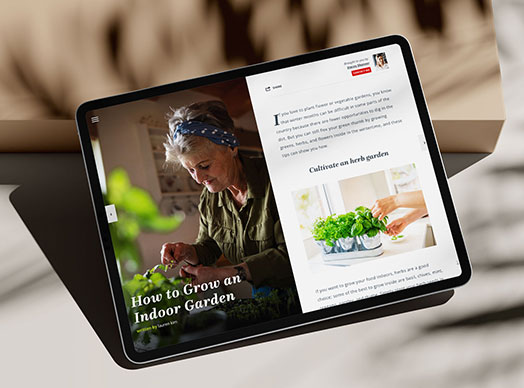It seems that two things are generally true when it comes to video marketing for real estate: everyone knows they should be doing something and everyone is reluctant to start. For some people, the problem is tech-related—they’re just not sure what platforms to use and how to ensure a professional result. For others, the reluctance is more personal—they feel too insecure about their appearance, their voice, or their ability to present themselves on video.
In reality, however, most agents and brokers who have mastered video marketing find that it’s what you know, not how you look or sound, that matters most to video viewers. If you’re providing information that is interesting, meaningful, and showcases your expertise, you’ll find your audience.
One of the things to keep in mind if you are just starting out with video, or if you’re trying to do more with video, is that all platforms are not the same, so the content you post shouldn’t be either. You’ll want to change up your video focus for different platforms so that you can optimize their capabilities and relate to the audience you’ll find there.
Here are some types of content that you might want to create and the platforms where each will work best.
1. Using video for virtual open houses and showings
You’ve probably already been doing virtual tours as part of your response to COVID-19 restrictions. While you might have started them as a stopgap to keep clients moving forward during the early days of the pandemic, you’ll probably find that virtual open houses and showings are part of the new normal post-pandemic.
One reason for this is the anticipated long-term effect of permanent work from home policies and the active real estate market that may be with us for months or years to come. Because so many people have experienced frustration in their 2020 home search, and low inventory means that they may continue to do so throughout 2021, virtual showings allow you to serve more buyers more conveniently and to potentially speed up the offer process.
In addition, a continued exodus from in-town neighborhoods to suburban and rural areas made possible by work-from-home policies, as well as increasing demand in resort and second-home markets, may mean that more buyers will be shopping long-distance for their next home. The ability to market properties remotely will be an important part of serving those clients.
2. Going live with Facebook or IGTV
Depending on where your primary social media audience is located, going live on either Facebook or Instagram is a great way to connect with your audience in a way that is dynamic and up-to-the-minute. Think of the old real estate goal of “being the mayor of your neighborhood” or geographic farming community.
Tell people what you’re up to and where you’re going, where you stop for coffee, or what’s happening in the neighborhood. This kind of content will be especially effective over the next few months as post-pandemic reopenings start in communities across the country.
In addition, as you reach out to long-distance fans and followers who may be interested in relocating to your market, you can give them a sense of what daily life is like in your area. Remember to engage by offering them the opportunity to ask questions, and then use their questions to determine where to film your next live video.
3. Targeted advertising with streaming platforms
One new way to advertise is through streaming platforms like Hulu. Use the targeting potential of these ads to promote your latest listing to potential homebuyers. This pays dividends in two ways—you’ll gain a wider audience for your listing and earn more listings by improving your marketing credibility.
You may want to work with a professional videographer experienced in creating video content for streaming or with a marketing firm that offers streaming ads as one of their services. This will help you ensure that your ad spend is optimized and that you are creating content specifically designed for the technical and creative specifics of your chosen platform.
4. Putting YouTube to work
For YouTube, you’ll want to create evergreen content and optimize titles for the keywords that are most relevant to buyers and homeowners looking at your area. Choose a schedule for posting, and stick to it so that fans know where and when they can watch your latest video.
Create a custom thumbnail with an online graphic platform like Canva, and use a service like Rev to create quick, affordable captioning. The easier you make it to consume your content, the more likely folks will be to seek it out week after week.
For on-the-town-focused content, stick to social media and use YouTube for more substantial topics. Tell people what it’s like to live in your area, offer neighborhood tours, and provide insights that newcomers will want to consider as they are planning a move. Don’t worry too much about subscriber or view count. The goal here is not to attract casual viewers and lookie-loos but to give potential clients an idea of what it’s like to live in your area and work with you so that they reach out when the time is right.
5. Using video messaging to stay top of mind
If you want to connect in a memorable and engaging way, use a video messaging platform like BombBomb to create content targeted to leads, buyers, and sellers in your pipeline. Send a video after meeting them for the first time and during every step of the transaction to keep them up to date and aware of deadlines and required document submissions.
For homeowners in your sphere, you can reach out with market information, CRMs, or reminders for everything from tax deductions to home maintenance tips. By making your content more personal and exciting, you can ensure that your communication is as effective as possible.




















